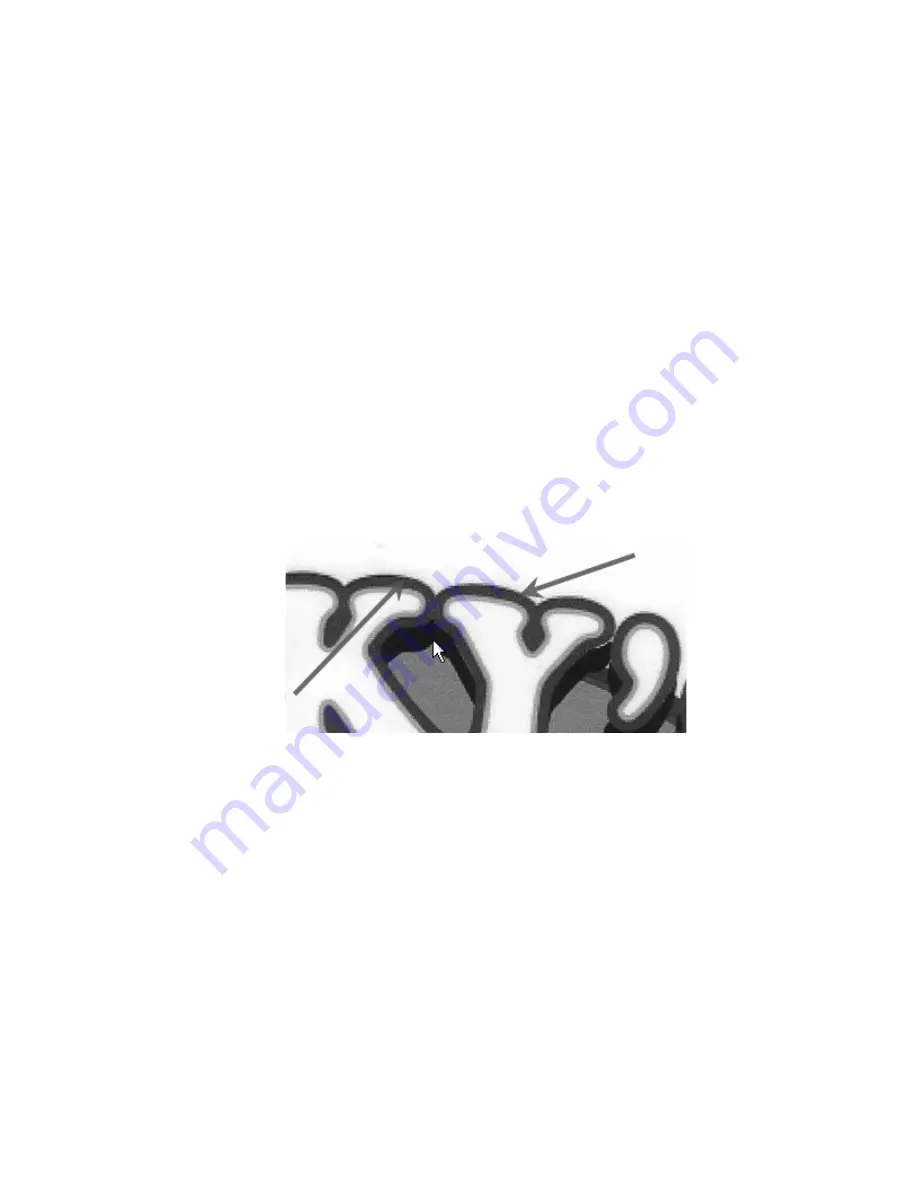
J5000 Operator’s Guide, Rev. 1.53
23
12.
Saturation -
If ink is bleeding, decrease saturation in driver preferences.
13.
Change the Printhead -
If print nozzles of certain colors are still clogged after
repeated cleanings it may be time to replace the printhead. See Section 5G.
C: Color Matching and Design Tips
These guidelines will help you get the best quality labels out of your J5000.
1.
Image Size/Shape -
The image size should correspond with the size of the label you
will be printing. Note: If the source image is smaller and must be enlarged to fill the
entire label space, this will affect the DPI. A 2" x 2" 300 dpi label blown up to fit on a
4" x 4" label would have an effective DPI of 75. This would not be a sufficient
resolution.
2.
Resolution -
Resolution is measured in dots per inch or DPI. 300 dpi is sufficient to
get the best possible quality from most images. A 72 DPI image will look fine on
screen but WILL NOT print well. Graphics and logos found on websites are typically
72 DPI. The image below was printed from a 72 DPI image. Notice the jagged
edges. Remember, print quality settings found in the label printer driver will have
no effect on improving a low dpi source image.
On the other hand, resolutions higher than 300 DPI will not produce better quality
but may require more RAM to print and hard drive space to store. They could even
slow down the print process.
72 DPI Image printed with J5000
3.
Image File Format -
Most graphics are created in a graphic application. Since this
graphic application is not usually on the same computer as the label printer doing
the printing, it is necessary to export the graphic into a universal format that can be
read by other programs. Supported graphic file formats are BMP, JPG, GIF, JPEG,
PNG, WMF, EMF, SVG, and XAML. The JPG files also work well for graphics that
include photographs. All nine formats can be imported into the Brady Workstation
application.
4.
Color Mode -
Set the color mode in the source graphic application to CMYK. In most
cases, this will produce the most accurate color reproduction of the image on
screen. However, if CMYK is not producing the desired color matching try changing
the source image to RGB and then exporting the image again in one of the universal
formats mentioned above.




















